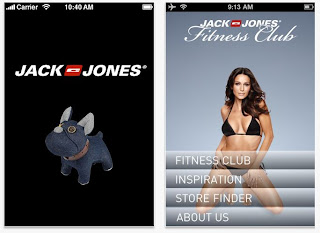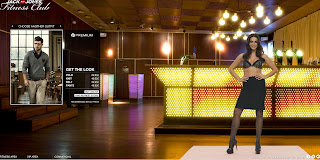Segmentation strategies
Demographic: Marketing segmentation strategy where the audience (potential customers) is divided into externally measurable characteristics.
Behavioral: A more focused form of market segmentation, which groups consumers based on specific consumption patterns they display.
- Past purchasing history
- Browsing history
Dayparting: Targeting users that are active at a particular time of day or day of week.
Designated Market Area: A segment Nielsen uses to standardize geographic areas for the purposes of targeting and measurement.
Retargeting: Targeting past visitors of your site.
Product-related: Segmenting the audience based on usage of a product (such as heavy vs. light).
Do's & Dont's
Don’t over-specify. Avoid making your strategy so specific that you end up with a reduced pool of potential customers. Piling a variety of schemes on top of each other is called hypertargeting, and is likely to hinder your campaign's performance by reducing your audience.
Target appropriately across media. Don't address your audience purely from one front; you may be reaching a different audience with your mobile and social strategy, and consumers interacting with your message through these channels may behave differently than they would through other channels.
Think strategically before tactically. You know your clients and their objectives. The objectives for targeting on a local scale are very different than targeting at a global scale, just as the objectives for a CPG advertiser with a short conversion cycle versus a longer term cycle.
Use past campaign analysis to revise your targeting strategy. It may sound obvious, but careful tracking of pacing and performance across past campaigns will tell you how well your message resonates with your target audience. If your message is underperforming, it may be the creative – or it may be that the audience you have set doesn't mesh with a particular medium, or perhaps you've defined your target audience too narrowly.
Frequency cap. Bombarding your audience over and over tends to lead to decreased engagement with an ad, and at worst, overexposure can lead to a negative association with your brand. Industry best practices place the frequency cap at 3.
A/B test. This is best practice for all types of advertising, and will help you better measure your campaign's success and plan for future retargeting campaigns.
Burn pixel. Just as consumers don't want to see the same retargeted ad 50 times, they don't want to continue seeing ads after they have converted, such as making a purchase. An easy solution is to use a burn pixel, which untags viewers as recipients of your ad once they have made a purchase.
Ad Networks vs Ad Exchanges:
Ad Networks
Ad networks formed in response to the explosion of publisher inventory during the Internet revolution.
In short, ad networks collect inventory from a range of publisher sites and sell it to advertisers at a price.
Advertisers generally don’t have time to sort through all the available inventory out there. Ad networks will do this for them, and present advertisers with select groupings of inventory that have been curated according to specific parameters the ad network chooses (or chooses on behalf of the advertiser).
Some ad networks offer specific audience segments (i.e. demographics, interests, behavior, etc.), while others will focus on pricing or scale.
Ad Exchanges
Ad exchanges are technology platforms that position ad inventory in an open digital marketplace for advertisers to peruse at their leisure.
Ad exchanges enable advertisers to gauge prices for ad impressions across multiple sites and purchase those that are most cost-effective.
Because ad exchanges integrate with other tools, such as a DSP, much of this ad buying is done instantaneously by automated computers. In this way, ad exchanges can provide transparency without sacrificing efficiency.
Ad Networks vs. Ad Exchanges
The most common metaphor used to compare ad networks to ad exchanges is the stock exchange, and I think it serves the purpose well.
In that scenario, ad networks are the private actors – or stock brokers – who offer select groupings of ad inventory that will satisfy a specific need. In contrast, ad exchanges act like the stock exchange itself, facilitating the buying and selling of inventory in an automated fashion on an open market.
– A Recap
- Ad networks offer specificity. Ad exchanges offer variety.
- Ad networks are companies. Ad exchanges are technology platforms.
- Ad networks keep pricing static. Ad exchanges base pricing on auctions.
- Ad networks take time to optimize campaigns. Ad exchanges allow campaign optimization on the fly.
Glossary
Ad Exchange
An ad exchange is a technology platform that functions primarily as a digital marketplace. It allows advertisers and publishers to buy and sell online ad space from various ad networks through real-time auctions. The payoff is efficiency and transparency. Ad exchanges enable advertisers to gauge prices for ad impressions across multiple sites and purchase those that are most cost-effective. All of this is done simultaneously, eliminating any lengthy ad-buying negotiations.
Ad Network
Ad networks are companies that gather ad space supply from publishers and sell it to advertisers, typically at a marked up price. In short, they act as middlemen who connect companies that create ads with websites with the space to display those ads.
Ad Server
An ad server is a web server that publishers use to store, manage, and deliver their ads to website visitors. Ad servers often employ advanced analytical tools, allowing publishers to use data to better understand and optimize their advertising model. For example, ad servers can count and track users, generating data-fueled reports for advertisers on the number of impressions their ads receive.
Ad Tag
An ad tag is code publishers place on websites in order to sell ad space. It consists of two parts: 1) a URL and 2) a piece of HTML or JavaScript code. Working together, these two parts first request content (ads or other ad tags) from the URL and then instruct the browser how to display the content.
API
An application programming interface (API) is a language format, written in code, which allows programs and applications to communicate with each other and their respective operating systems. The language creates a standard of rules and protocols which programmers use to develop software that doesn’t conflict. In the mobile ad tech sector, API-powered mobile devices offer greater visibility into a user’s lifestyle, delivering data that can create marketing opportunities and inform strategic decisions.
App
An app is simply an application. The term is specifically used to differentiate an application on a mobile device, such as a mobile game, from programs on a traditional desktop computer.
Attribution
Attribution is the process by which user interactions are identified and measured. It’s a way in which marketers garner a better understanding of how certain events lead users to a desired outcome, referred to as a conversion. Attribution quantifies an ad’s ability to influence a consumer’s purchasing decisions, providing marketers with a way to compare the effectiveness of various marketing campaigns.
Banner
A banner is any type of advertisement that acts as a “banner” displayed usually at the top or bottom or the webpage or app. Banner ads are still very popular today, and feature both text and graphics.
Creative
Creative, specifically ad creative, is a file that houses the digitally formatted design and artwork for an advertisement. This file is rendered as a display ad on the publisher’s medium and can take the following formats: Image (GIF, PNG, JPEG), Flash File (SWF), HTML or JavaScript.
CPA
Cost-per-Action (sometimes known as Pay Per Action or PPA; also Cost Per Conversion) is an online and mobile advertising pricing model, where the advertiser pays for each specified action. For example, an action after an initial impression and click, like an install, form submit (e.g., contact request, newsletter sign up, registration etc.), double opt-in or in-app sale. Formula: CPA = Cost/Number of Actions
CPC
Cost-per-Click (CPC) is the price the advertiser pays a publisher every time a consumer clicks on the ad. The price is set by the advertiser. Formula: CPC = Cost/Number of Clicks
CPI
Specific to mobile applications, Cost-per-Install (CPI) is the price an advertiser pays whenever the consumer installs the advertised application. Formula: CPI = Cost/Number of Installs
CPM
Cost-per-Mille (CPM) is a pay structure designed to generate brand awareness. The advertiser pays the publisher for every 1000 times the advertisement is displayed to a consumer. Formula: CPM = Cost X 1000/Impressions
CTR
Click-through rate (CTR) is the ratio of clicks to ad impressions. This is the most commonly used metric to determine the success of an ad campaign. Formula: CTR = Number of Clicks/Impressions
DMP
A Data Management Platform (DMP) is a centralized digital warehouse where marketers, publishers, and other businesses can effectively store, manage and analyze large quantities of data. DMPs are incredibly useful in marketing campaigns, enabling optimization through more effective ad targeting.
DNT
Do Not Track (DNT) is specifically a HTTP header field that sends a signal to other websites, namely analytics companies, ad networks and social platforms, requesting them to disable any tracking of individual users. Despite the request, many sites still do not honor the DNT signal. There currently exists no standardized protocol for its enforcement.
DSP
A Demand Side Platform (DSP) is a centralized technology platform that enables automated ad buying from a range of publisher sites while simultaneously connecting with consumers through vertical and lateral targeting. It’s an all-in-one tool for advertisers, efficiently integrating the buying, delivering and tracking of ads through proper utilization of data. The result is campaign optimization. Marketers can manage and tailor both their bids and their data to more effectively reach their targeted audiences. There are a handful of good mobile DSPs out there. Ours is AdCast™.
eCPM
Effective Cost-per-Mille (eCPM) is a way to measure the value of a publisher’s inventory on a Cost-per-Mille (CPM) basis. eCPM is calculated by multiplying the number of clicks (CTR) by the CPC rate to determine total revenue. That total is then divided by the number of blocks of 1,000 impressions delivered, giving the eCPM value. Formula: eCPM = (Total Spent/Impressions Delivered)X 1000
Fill Rate
The fill rate is the rate at which a publisher successfully displays an ad in relation to the number of times the ad was requested. Essentially, this rate evaluates the amount of wasted inventory space a publisher has.
GRP
Gross Rating Point (GRP) is a standard measure for the impact or exposure of an ad campaign. GRPs calculate reach multiplied by exposure frequency. For example, if an ad is exposed to 32% of a targeted audience and that exposure occurs a total of three times at the same 32% rate, then you have a GRP of 96. Because the GRP measures gross, it is therefore possible to have a number over 100.
Impression
An ad impression is the calculated instance of an ad being displayed to a human consumer. Impressions give marketers a broad understanding of how many people their brand is reaching.
Inventory
Ad inventory is the total amount of space a publisher has on their respective platform to display advertisements from advertisers. Ad inventory is sold to an advertiser at a price, often determined through an online bidding system. Specifically mobile ad inventory is often measured in impressions.
Mediation
Mobile ad mediation is a technology that allows publishers to maximize the revenue gained from selling impressions. The ad mediation platform ranks ad networks according to publisher priorities, enabling the publisher to quickly find and choose ad networks that provide the highest potential revenue for their inventory.
Programmatic Buying
Programmatic buying is automated ad buying. It allows advertisers and publishers to quickly buy and sell advertisements through computerized systems and without the need for human intervention.
ROI
Return on Investment (ROI) is a metric used to determine the benefits of an investment and compare that to the cost.
RTB
Real-time bidding (RTB) is the process by which ad inventory is bought and sold instantaneously through programmatic means. The auctions, which take place every time a web browser opens a website, sell ad space provided by publishers to the advertiser willing to pay the highest price. The entire process is facilitated by ad exchanges.
Rich Media
Rich media constitutes a kind of ad that will typically contain some form of video or user interaction engagement. Rich media allows advertisers to connect with and involve consumers on a deeper level, providing dynamic content and effects.
SDK
A software development kit (SDK) is a set of programming tools for developers and programmers to use for the creation of a wide range of applications for various software packages. In mobile tech, these tools are often made available to customers, offering an intuitive, easy-to-use programming kit to develop their own mobile apps. Once created, apps created from publishers and consumers alike can be published and sold over the popular app marketplaces.
SSP
A supply side platform (SSP) is a technology that allows publishers to maximize the revenue gained from selling their ad inventory. It’s an automated system that connects publishers to multiple ad networks and exchanges to facilitate the purchase of inventory. Publishers then can receive the best possible price as their inventory is exposed to the highest number of potential bidders possible.
Viewability
Was your ad seen by a human? If so, for how long? These are the tough questions that mobile viewability seeks to answer for advertisers and publishers alike.

















